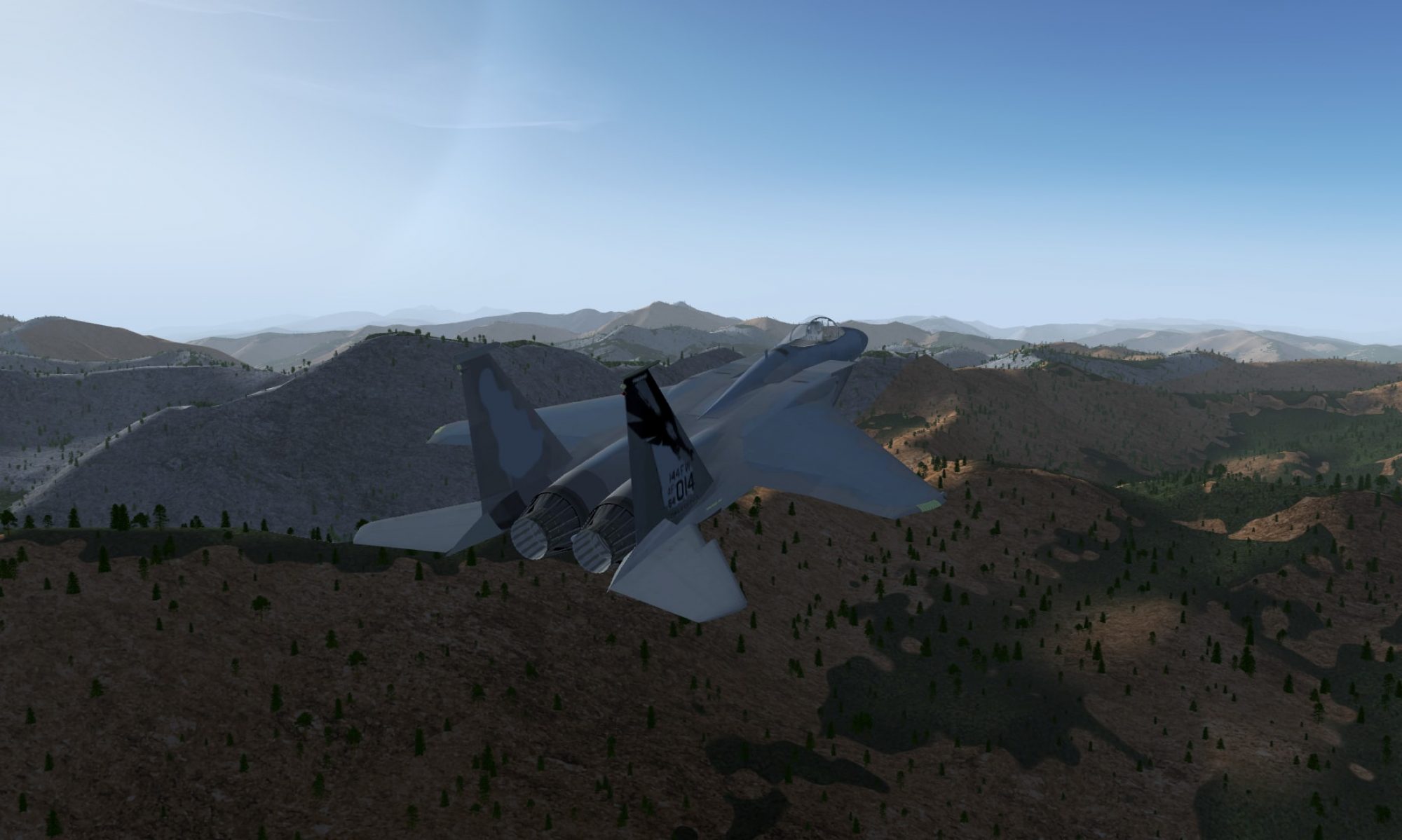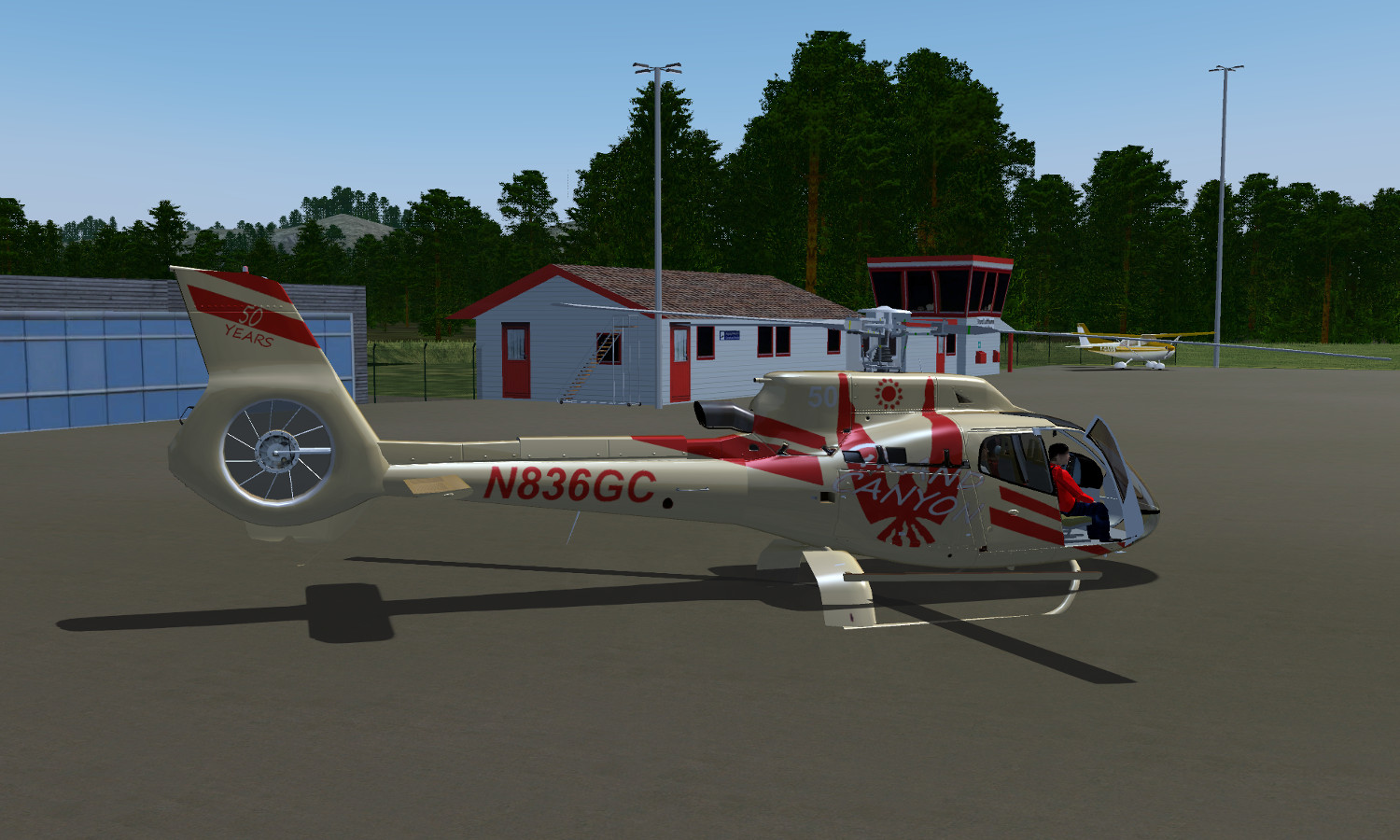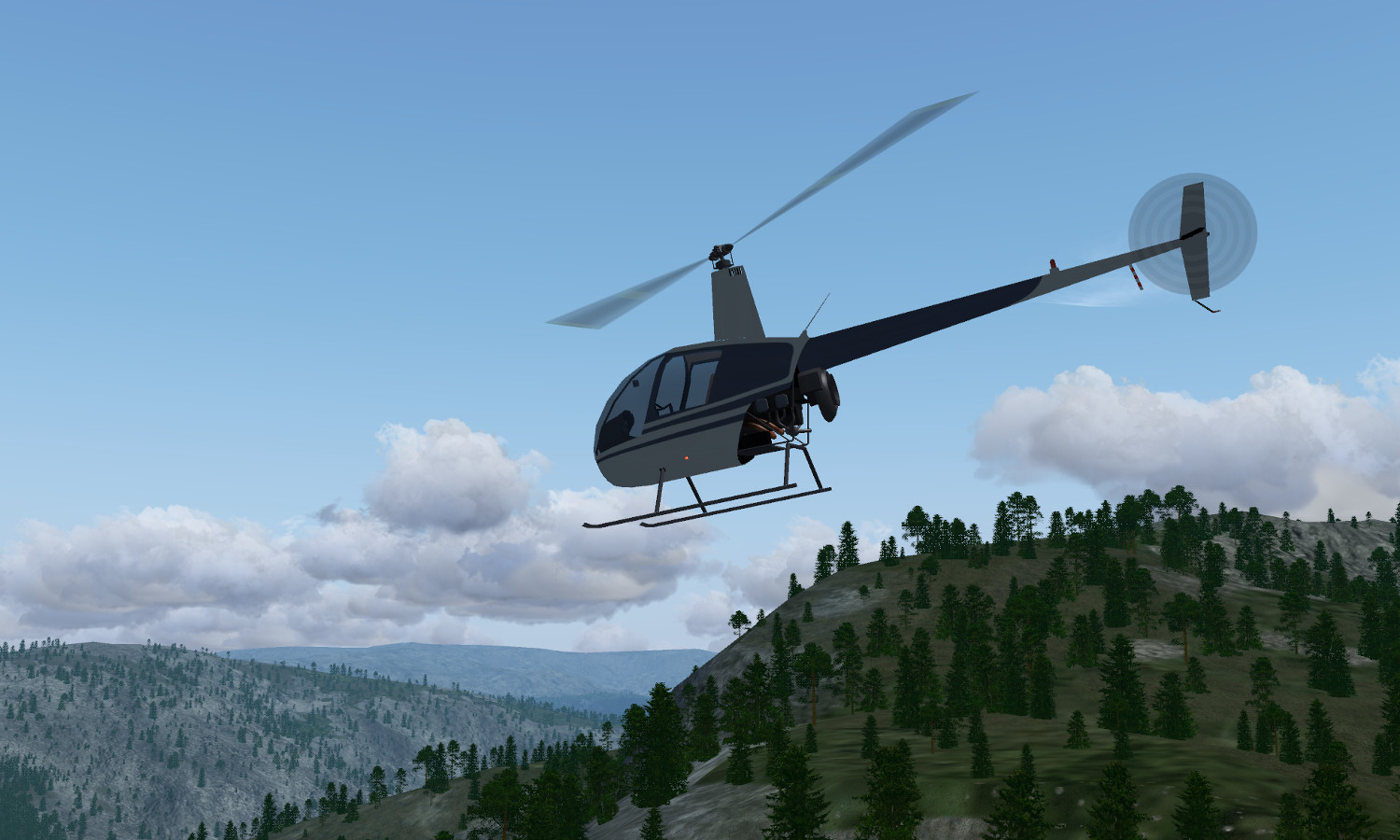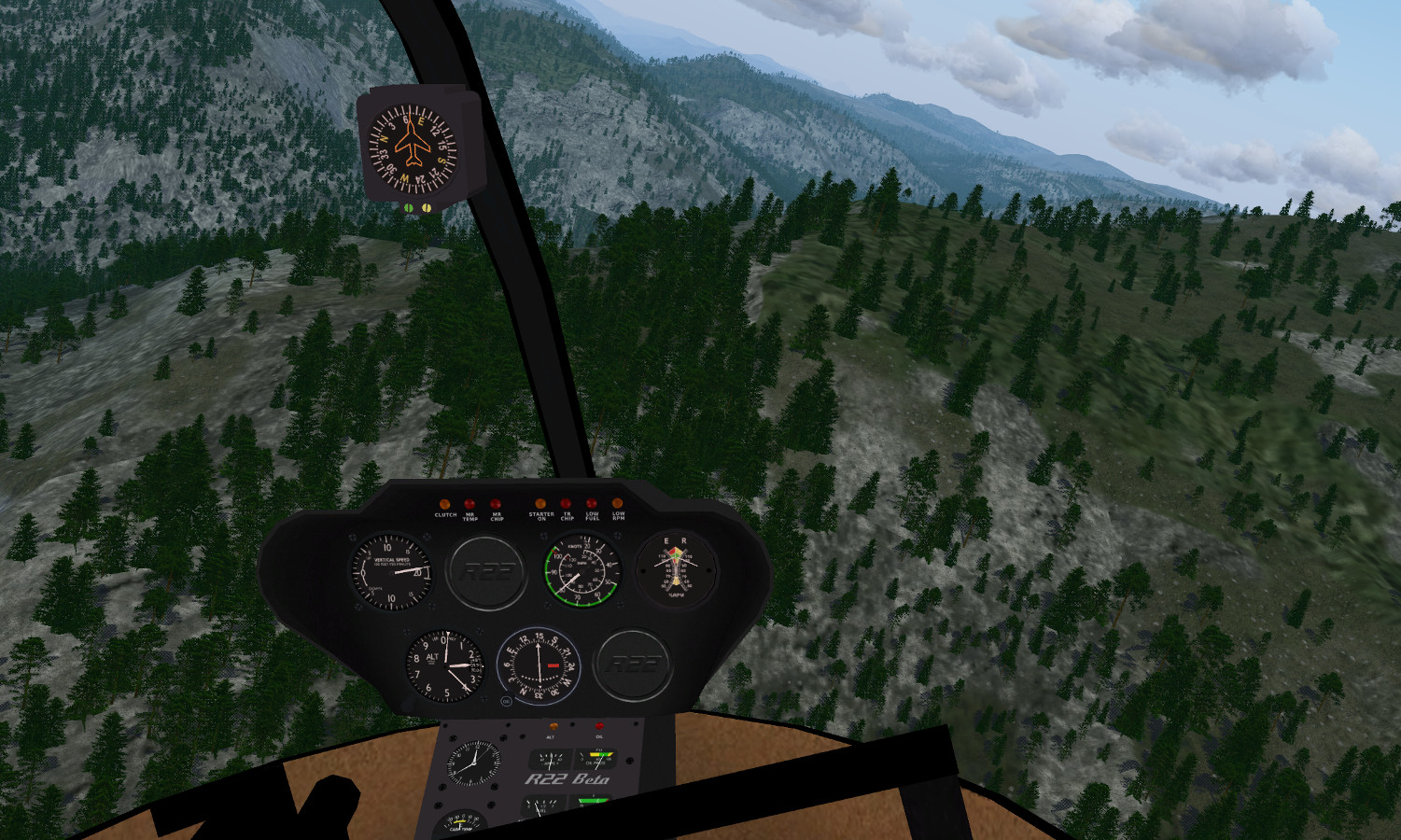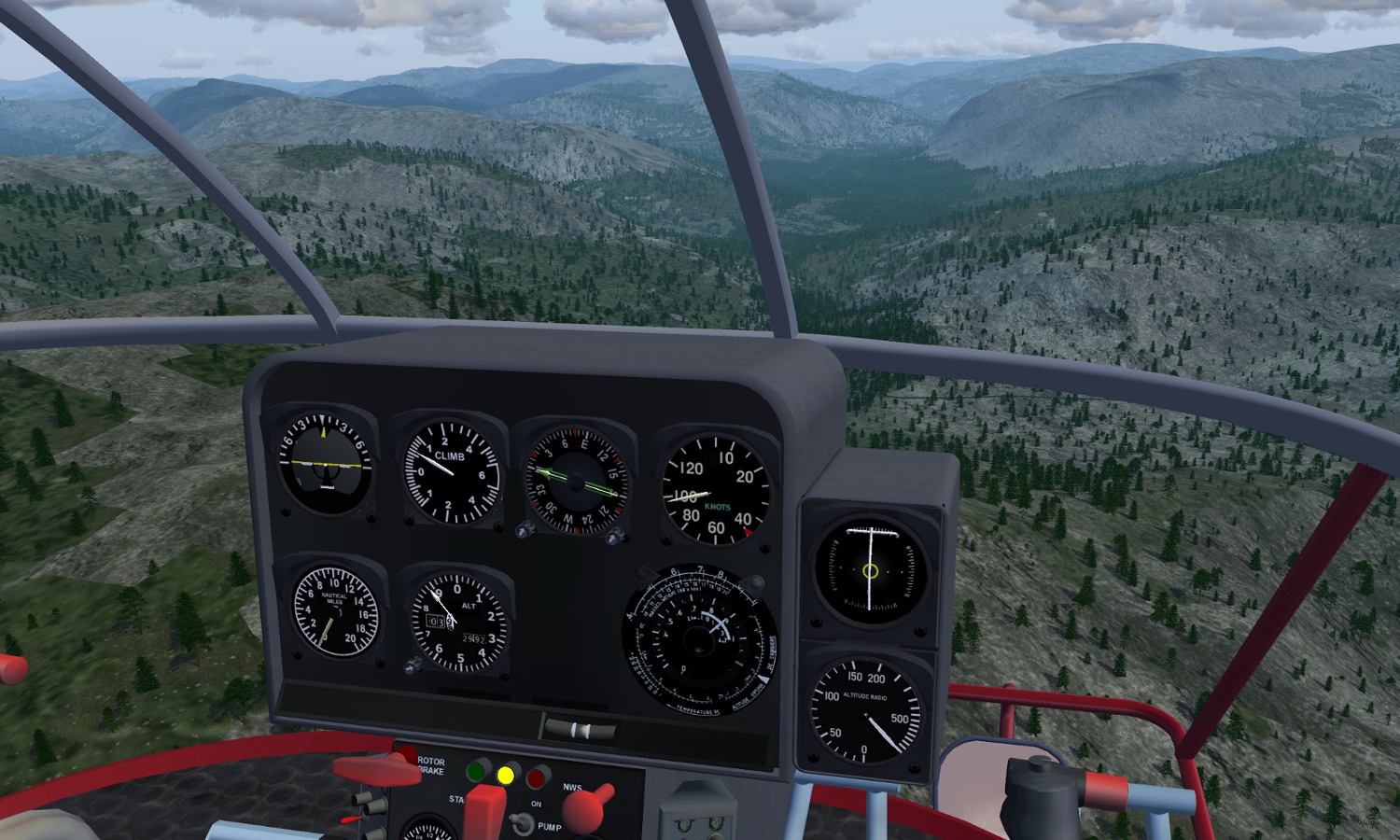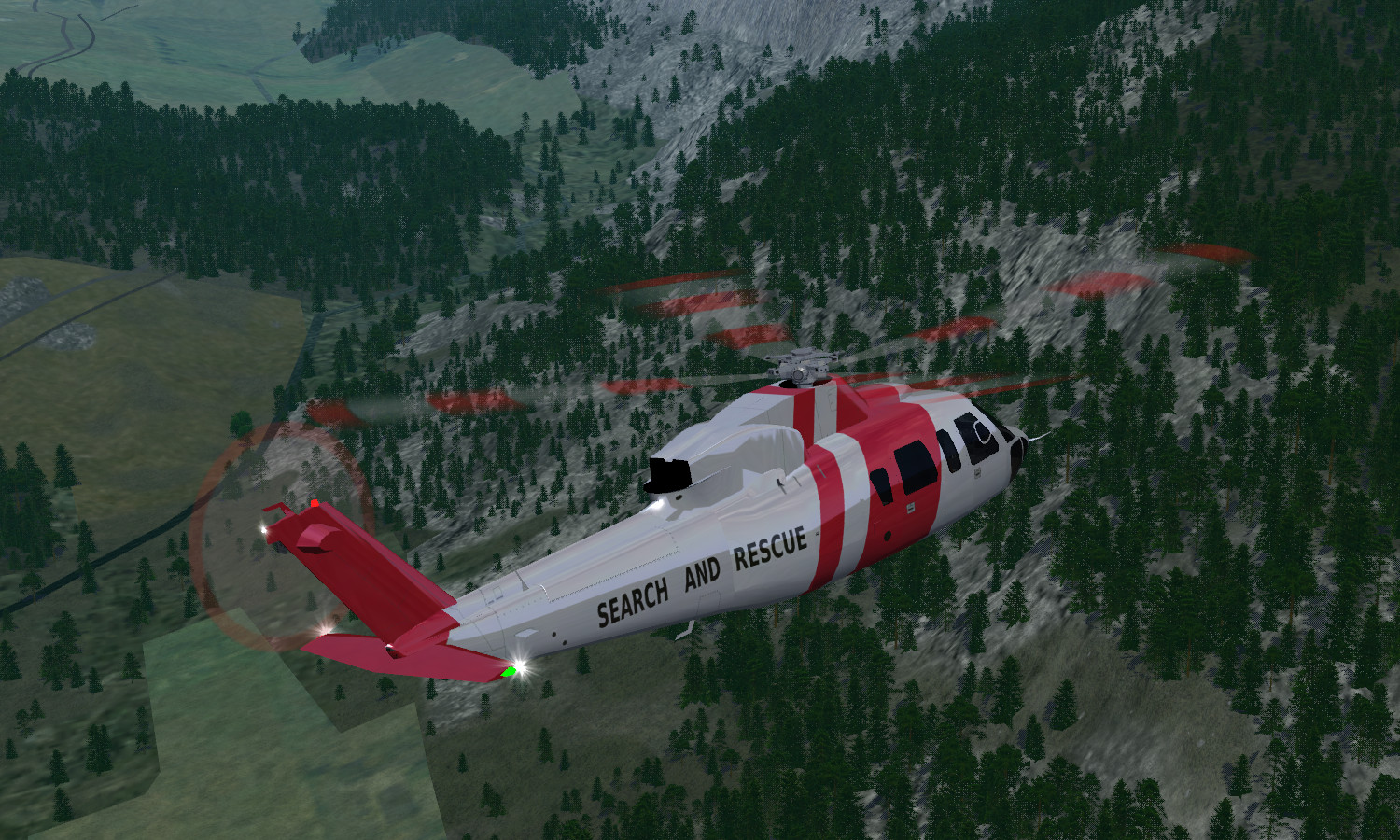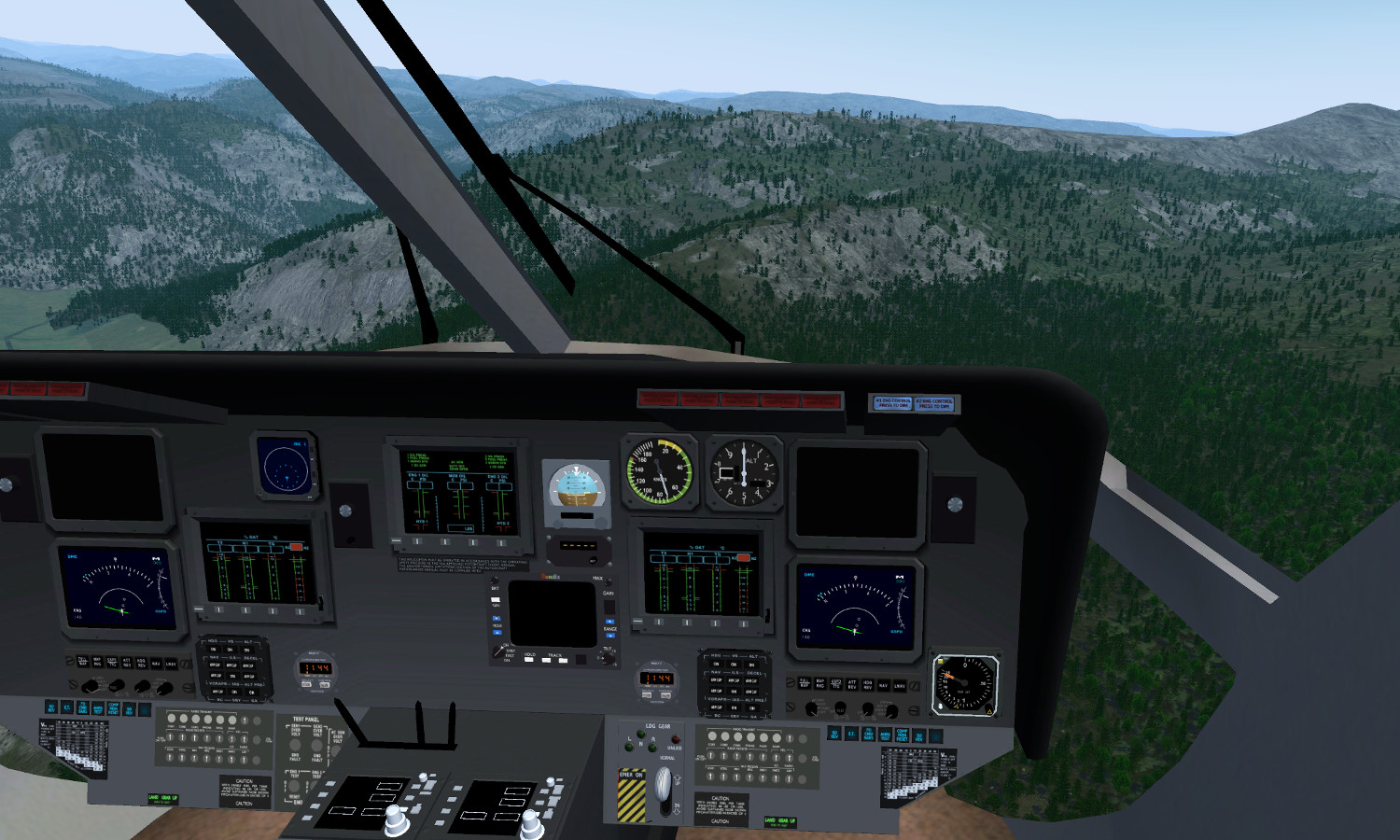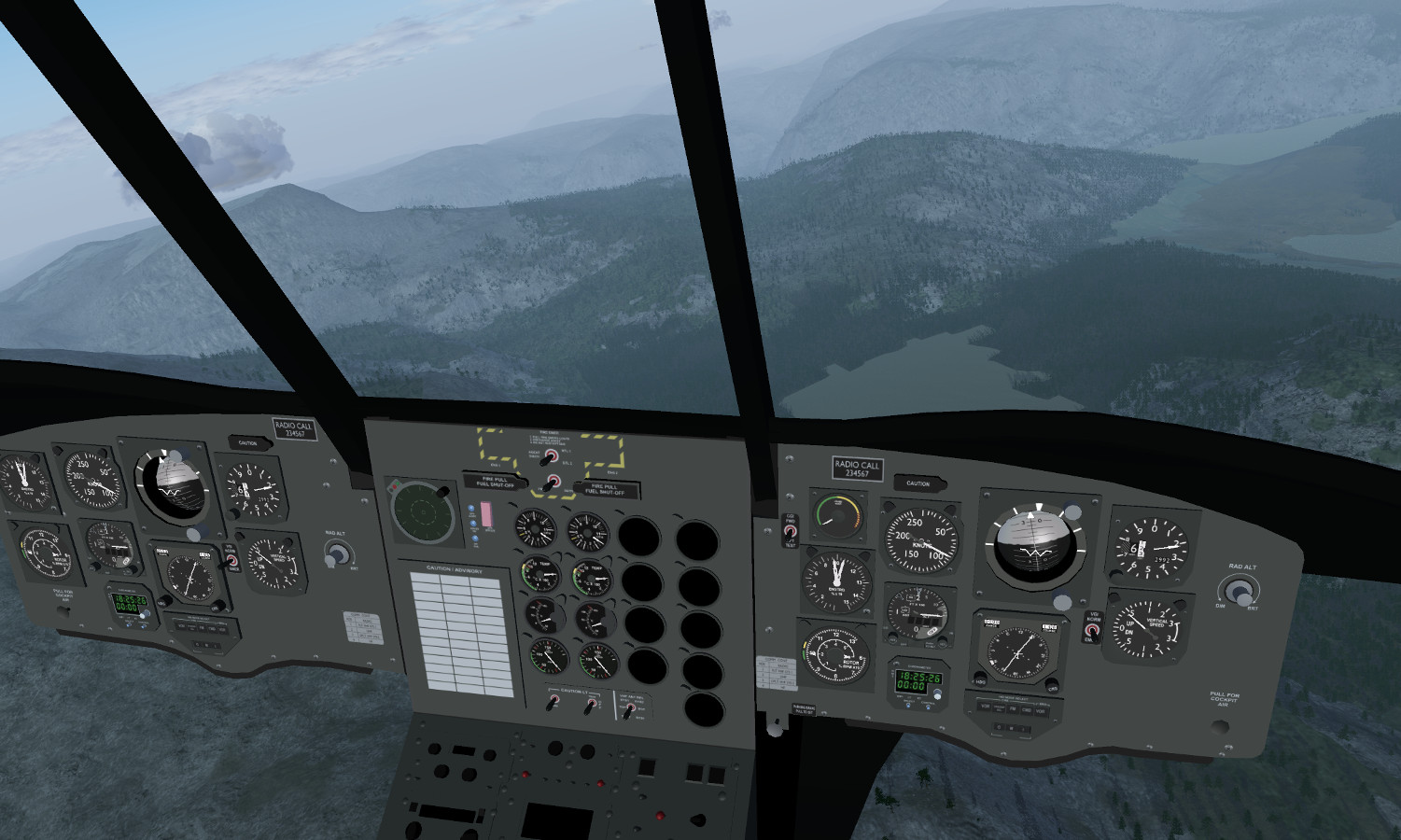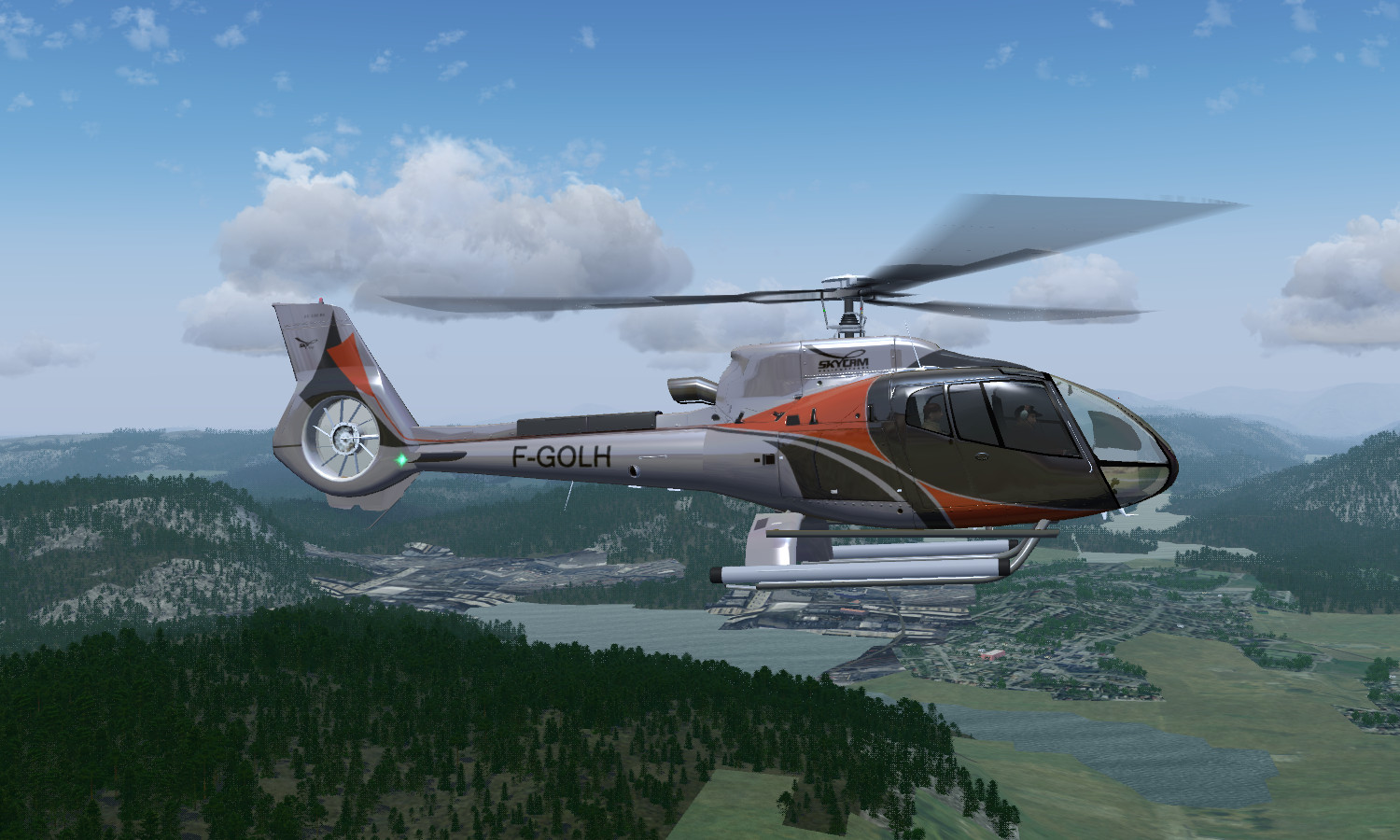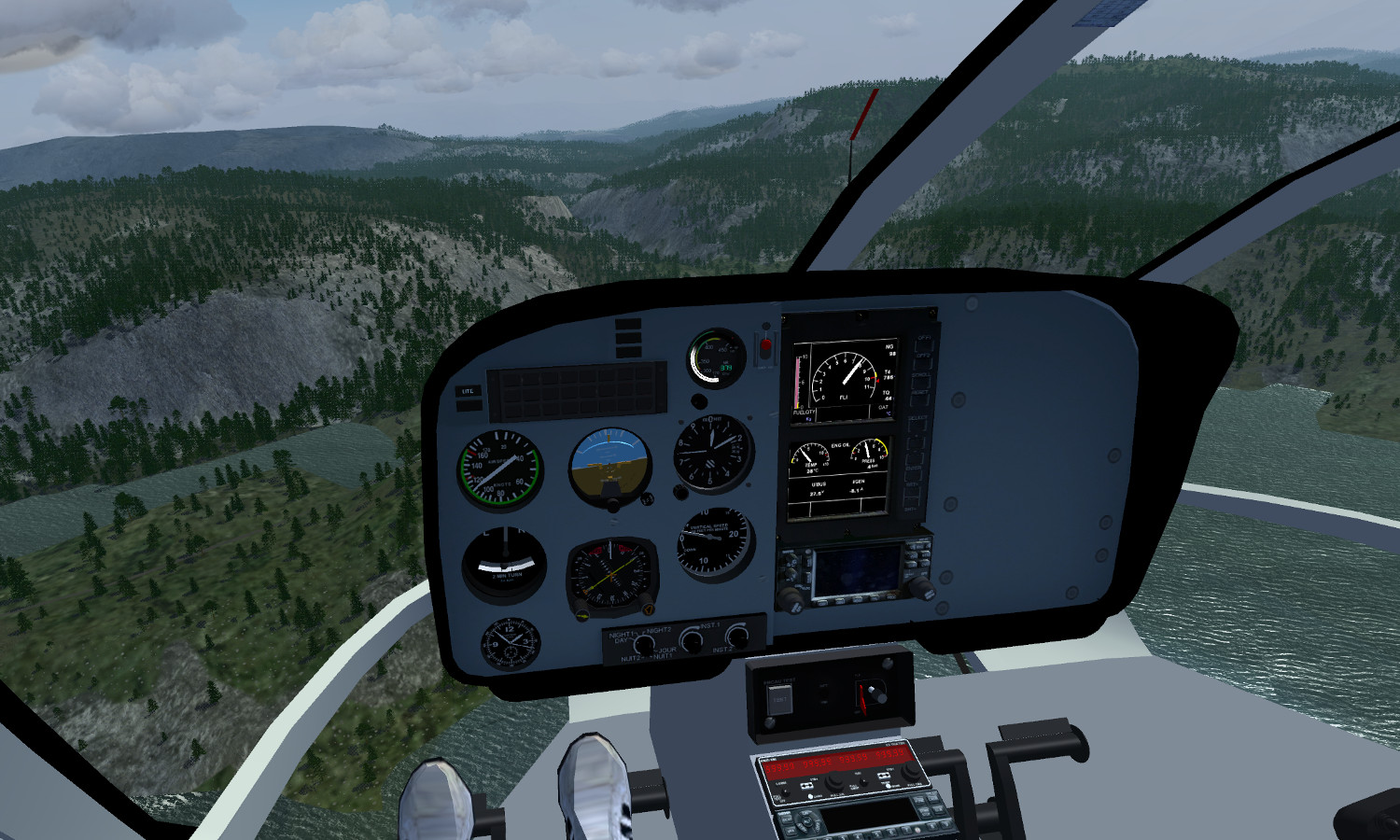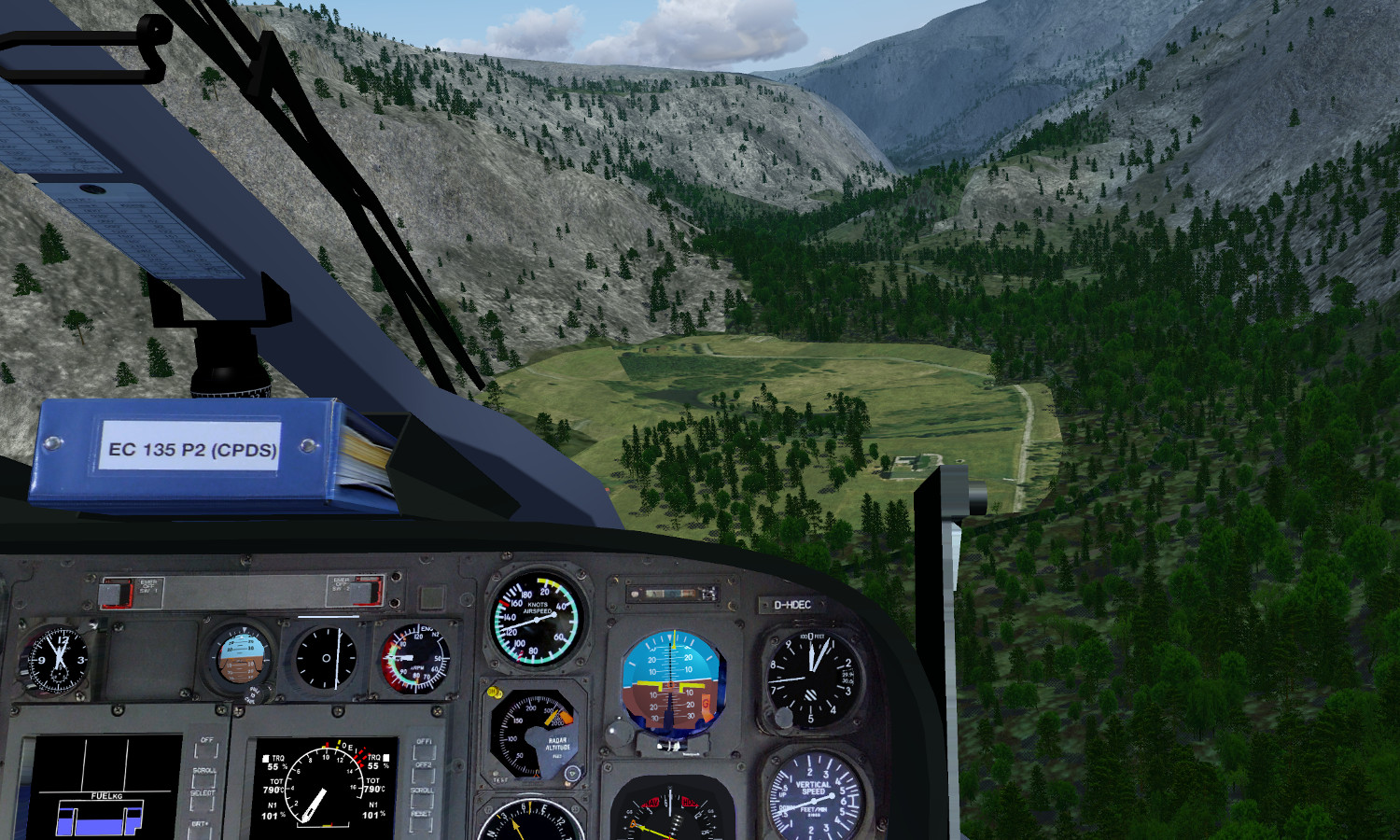The Art of Hover Flight
While most Flightgear users seem to mainly use GA aircraft or airliners, the simulation of helicopters is not only possible but comes with a nice degree of realism. This makes learning to fly a helciopter quite a challenge, but also very educational.
Why not try it out?
Piloting a helicopter is also a nice opportunity to see the terrain in a different way, because usually the view downward is much less restricted than in aircraft cockpits – here a good graphics card to support all the hires terrain texturing and the various vegetation and building overlays that can be enabled really pays off. And of course you can land pretty much anywhere you like, airports are no longer a must, any flat patch of terrain will do. But there are also hundreds of helipads in the FG scenery, located on places like hospital rooftops or oil rigs.
Ready for takeoff? Let’s take a quick look at some helicopters FG has to offer.
Helicopter flight
If you’ve mastered flying normal aircraft and have the idea that helicopters can’t be so different, you’re likely wrong – helicopters are very different.
Normal aircraft are usually dynamically stable – if they feel a perturbation, they return to a stable attitude. Helicopters reach this condition only when they accelerate, but just after takeoff and before landing they move through the air slowly, and they’re in fact dynamically unstable – any perturbation needs to be countered quickly with the controls, or it will grow and the pilot will lose control.
Another thing that takes some time getting used to is that the body of a helicopter swings like a pendulum underneath the rotor. The pilot always needs to recognize when a motion is part of this oscillation and will dampen out on its own and when it is actually part of the flight dynamics.
Yet perhaps the hardest thing to master for beginners is the torque of the rotor. The rotating blades try to yank the helicopter around against their own motion, and only the action of the tail rotor prevents this – so pedals need to be used carefully to counter this effect.
So how is a helicopter controlled?
Unlike in an aircraft, the turbine RPM is usually not throttled. Rather, the angle of the main rotor blades is changed by the collective control- this provides upward/downward motion. The main rotor can be tilted by moving the stick, this provides a combination of forward and sideward motion. It is actually quite feasible to fly a helicopter sideward, or even backward if it is done slowly, only once the airstream becomes fast, the fuselage tries to align with the wind like for an aircraft. Finally, the pedals control the tail rotor action – they can be used both to stabilize the craft against the main rotor torque as well as swing the nose around into a new direction in hover flight.
The final important ingredient to understanding helicopter flight is the ground effect. If the air displaced by the main rotor can’t go anywhere quickly because there is terrain underneath, it forms a ‘cushion’ of air that keeps the helicopter afloat. The effectivity of this cushion decreases quickly with altitude, thus close to the ground the collective actually controls altitude rather than vertical speed. Setting the rotor to displace more air pushes the helicopter upward, but then the ground effect decreases, so the craft settles at a new altitude.
A helicopter is then taken off by hovering into the ground effect, then using the stick to induce a forward motion (which gradually causes more lift on the rotor blades), and only when it is faster than some minimum speed flown out of the ground effect region. Similarly, one can expect and anticipate the ground effect for a landing.
While all these effects are there for any helicopter, the degree to which they make themselves felt differ quite a lot, and so every craft has to be learned separately.
The Robinson R22
If you were to attend real helicopter flight training, the Robinson R22 is the type of helicopter you would most likely encounter – it’s a low cost craft, popular throughout the world as a trainer or utility helicopter. The R22 has a low inertia rotor system, and the control inputs are transmitted directly by rods without hydraulic assistance. This means that the controls have to be moved very gently to avoid overcorrecting, and overall the helicopter reacts rather finnicky. This does seem to make it a bad choice for a trainer, except the idea seems to be that if a flight student masters the R22, she won’t have any problems with a heavier helicopter.
The instrumentation is generally simple, giving the pilot an almost unhindered view through the windshield.
In Flightgear, the R22 definitely exhibits the characteristics of the original counterpart. There’s lots of torque which is difficult to compensate, and you need to work a lot for even a halfway decent hover flight. Also, bringing the R22 into level flight with a good trim is far from trivial.
The Alouette III
The Alouette III is an aging light utility helicopter, in service since 1960, mainly used by military forces around the world, used for tasks ranging from passenger transport to aerial ambulance and SAR. Compared with the R22, it is a much heavier machine and hence considerably less skittish on the controls.
In the Flightgear version, the startup and shutdown sequences are implemented and the instrument panel is largely functional. What takes a bit to get used to is that this helicopter has wheels rather than skids, which makes sometimes for a surprise when landing in sloped terrain.
The Sikorsky S-76C
As a medium-sized utility helicopter, the Sikorsky S-76 dating to the 1980s comes with quite a bit of modern avionics aboard. Two turbines pack a lot of power, and the craft also features a retractable gear for better cruise performance.
Unfortunately, the avionics of this helicopter is not fully implemented in FG, but it nevertheless is a nice classy craft to fly.
The Chinook CH-47
The mighty Chinook CH-47 is a heavy lifter used by the US Army since the 1960s, both for transport as well as for aerial assault purposes, inserting troops behind enemy lines.
Unlike any of the helicopters above, the craft features counter-rotating twin rotors which removes the need for a tail rotor. This (and the large mass) make the flight fairly stable and the helicopter feels a bit sluggish at the controls.
Unfortunately, many instruments are modeled in the panel but not actually working, which limits the experience somewhat.
The Eurocopter EC 130
A truly modern light utility helicopter, the Eurocopter EC 130 was introduced in 2001 and is in strong demand around the world. It comes with a modern avionics set and (for its weight) a fairly powerful engine.
In the simulation, the EC 130 is, hands down, one of the most stunning models with a photorealistic exterior utilizing pretty much every rendering effect available. Once in the cockpit, there is a detailed startup and shutdown procedure available that’s supported by the checklist system. In addition, many different configurations and pieces of equipment (such as external baskets or a serchlight) can be chosen. Once you try it, you’ll love it.
The Eurocopter EC 135
Introduced in 1996, the EC-135 is another modern light utility helicopter used for multiple purposes ranging from medical transport and SAR to sightseeing. Powered by two turbines, it packs even more horsepowers than the EC-130.
Both the interior and the exterior of this helicopter show in FG at photorealistic quality. The EC-135 is a truly remarkable piece of work, both in the flight characteristics and visually.
Curious?
Eager to try out helicopter flight now? While the R22 is what real flight students learn with, the craft is very hard to master without the helping hand of an instructor. Since you’re not paying for simulated damage or flight hours, you might as well start with a heavy machine such as the Chinook to get a feeling for the basics of helicopter flight without the complication of rotor torque, and then move on to a ‘nice’ machine like the Alouette III before tackling the really hard craft.
Don’t be discouraged by failures – you’ll probably crash the first dozen times before getting the ride off the ground properly, and it really takes a while to get the correct ‘feel’ for the controls such that good hover flight and precision landings are feasible. This is much harder than flying an airplane.
For a good introduction to the techniques of helicopter flight in FG, see the Flightgear Wiki.
